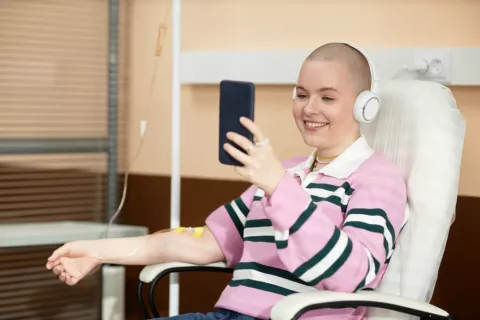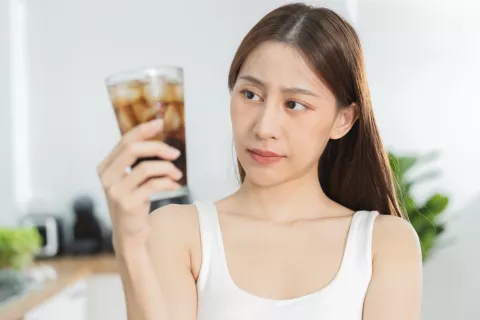The Ministry of Health has analyzed more alternative therapies with the aim of validating their effectiveness and considering their inclusion in its list of pseudotherapies, based on the reports prepared by the Spanish Network of Health Technology Agencies and Benefits of the National Health System ( RedETS). Specifically, Health analyzes vacuum therapy (cupping or cupping therapy), light therapy for mental health problems, conscious breathing, chi-kung or qigong, zerobalancing, aromatherapy and relaxation techniques based on the induction of bodily sensations, most of which have little scientific evidence or limitations in the studies analyzed on their supposed virtues that bring them closer to the consideration of pseudotherapies.
The documents can be consulted on the RedETS website and on the #CoNproba portal, an initiative that brings together the measures of the Government of Spain against pseudosciences and pseudotherapies, where the last nine reports were published, which analyzed the effectiveness and safety of acupuncture, pilates, yoga, flower therapy, reflexology, music therapy, tumor therapy, meditation and deep structural massage.
These studies have been prepared by the Spanish Network of Agencies for the Evaluation of Health Technologies and Benefits of the National Health System, a collaboration between agencies or evaluation units of both the General Administration of the State and the autonomous communities. This network operates in a coordinated manner, using a unified methodology and based on the principle of cooperation and mutual recognition.
The latest reports evaluate and determine the effectiveness and safety of these eight practices:
- Vacuotherapy (cupping or cupping therapy) for musculoskeletal disorders: uses glass or plastic cups, heated and applied to the skin in various points of the body. The analysis determines that, due to the risks associated with its application and the low quality of the studies that support its effectiveness, its use is not recommended for these conditions.
- Tai Chi: considered an exercise that involves all muscles, improving strength, flexibility and balance, with a lower risk of injury compared to other physical activities. It is observed that Tai Chi is beneficial for general well-being and the reduction of pain in musculoskeletal diseases, suggesting that these supposed benefits are related to physical activity itself.
- Light therapy for mental health disorders: use of light for therapeutic purposes. Despite its varied use, and that “interventions with light therapy are well tolerated by patients and the evidence on their safety has not reported complications or clinically relevant adverse effects associated with the application of light therapy,” the The lack of conclusive studies and their limitations prevent us from affirming their effectiveness and safety in the treatment of mental health conditions, as indicated in the document that analyzes this technique.
- Mindful Breathing: Practice of focusing fully on breathing, which can reduce stress and anxiety, even in palliative settings, by slowing heart and breathing rates. However, according to the Health report, although conscious breathing could be considered a safe practice and no adverse effects are expected to appear, and it could improve distress or discomfort and levels of depression and anxiety, no benefits have been found on symptoms such as pain, shortness of breath and nausea in palliative patients. Regarding its use in other pathologies, the evidence seems to indicate that it could improve dyspnea and high blood pressure.” However, the document continues, “these results must be interpreted with extreme caution, since the low overall methodological quality of the scientific evidence identified does not guarantee that they can be extrapolated to clinical practice.” Therefore, it is concluded that the current evidence and its limitations suggest that the results cannot be generalized to clinical practice without caution.
- Chi-kung/qigong: exercises that combine movement and breathing, potentially beneficial due to physical activity and respiratory education. This activity does not end badly, since although the work of Health determines that the scientific evidence on this practice “is based on low-quality studies, so these conclusions cannot be assumed with a high degree of certainty,” the chi kung could “have the benefit of low-impact physical activity for people with musculoskeletal diseases and those where it can contribute to reducing stress levels and improving quality of life.” And he clarifies that “given the apparent low risk of its practice, this, associated with therapies that have shown benefit in more solid scientific studies, does not seem to pose a risk for people who practice it.”
- Zerobalancing: a body work technique that seeks the balance between ‘energy’ and ‘structure’ according to its founder, Fritz Frederick Smith, a traumatologist and osteopath in the 70s, and which is aimed at people with acute or chronic stages of any disease, as well as individuals in generalized stress conditions. However, according to the analysis carried out by Health, currently, there are no studies with an experimental design, nor systematic reviews or meta-analysis, that report results of zerobalancing in terms of effectiveness and safety in any pathology.
- Aromatherapy: use of essential oils to improve well-being and relieve emotional and physical symptoms. “Although it can be a complement for certain symptoms, such as the control of anxiety, respiratory rate and heart rhythm in cardiovascular diseases and pain in dysmenorrhea, in other cases, such as the effect of aromatherapy on anxiety, the quality of “Life or pain in people with cancer, anxiety and pain after cesarean section or dental anxiety, is still uncertain.” Thus, the methodological quality of the studies is low and mild adverse events have been reported, they point out from the report prepared by the Ministry.
- Relaxation techniques based on the induction of bodily sensations: includes autogenic relaxation training, which seeks deep relaxation through the visualization of physical sensations. Although it can improve psychological symptoms such as anxiety, and physical symptoms in various health conditions, its effects have been very moderate, and Health indicates that the evidence is limited, and more research is needed to confirm its safety.
Source: Ministry of Health















